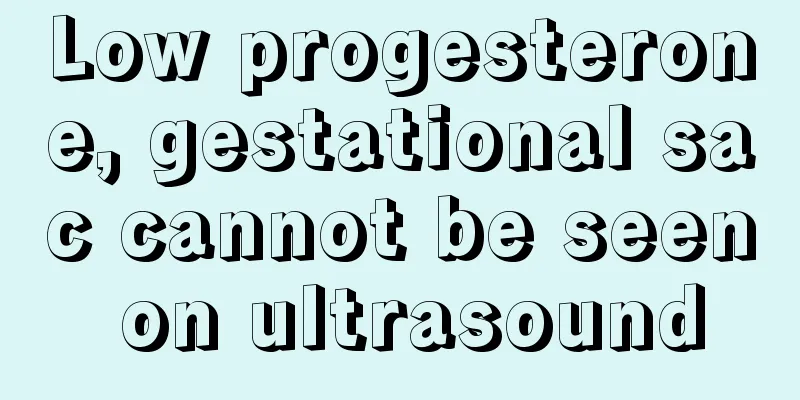Medical abortion without placenta

|
Medical abortion is a method of abortion that many people prefer nowadays, mainly because compared to surgical abortion, it involves less surgical steps. Medical abortion mainly uses drugs to eliminate the pregnancy in the body, that is, the placenta is detached. But in real life, many people resort to medical abortion, but they fail to achieve the effect of placental detachment. When there is no placenta during medical abortion, what solutions should we take to solve this problem?
If a small part of the placenta or fetal membrane remains in the uterus during placental retention and is not discovered at the time, it may also cause heavy bleeding and infection later. Retained placenta is a matter of life and death for the mother. Correct treatment of retained placenta is of great significance in preventing postpartum hemorrhage and reducing maternal mortality. If for some reason the placenta does not fall off the uterus, it is called placenta accreta. People who have had multiple miscarriages or cesarean sections have a higher risk of placenta adhesion. In addition, about 10% of patients with placenta previa will develop placenta adhesion. If it is confirmed to be an accreta placenta, the doctor will take artificial measures to remove the placenta after delivery. If this still does not remove the placenta, surgery will be required to remove it or leave it in the body. The part of the placenta that remains in the body is called retained placenta, and the development of the disease must be closely monitored. If the placenta has been detached from the uterine wall and has not been expelled, when the bladder is overswollen, you should first catheterize and empty the bladder. Then use one hand to massage the uterus to contract it and gently press the fundus of the uterus. Use the other hand to gently pull the umbilical cord to assist in the expulsion of the placenta. If the placenta is adhered or the expelled placenta is defective, artificial placental separation should be performed to remove the placenta or residual placental tissue. If it is difficult to remove the residual placenta, it can be removed by scraping the uterus with a large blunt curette. If the placenta is incarcerated above the stenotic ring and is difficult to remove manually, it can be removed by dilating it with the fingers under general anesthesia.If it is placenta accreta, hysterectomy is the safest method. Do not forcibly peel it off or remove it with your hands to avoid uterine perforation and fatal bleeding. For those who insist on retaining their fertility, the implanted part can be removed and the uterine wall can be repaired, or the placenta can be allowed to remain in the uterine cavity and wait for it to gradually dissolve and be absorbed or naturally expelled, but infection should be strictly controlled.
Excessive blood loss may reduce the body's resistance, leading to puerperal infection or even sepsis, which is life-threatening. Therefore, in addition to paying attention to various aseptic operations during the rescue process, a large amount of antibiotics should be given after delivery, and anemia should be actively corrected and nutrition should be strengthened. |
<<: Still draining blood after 15 days of medical abortion
Recommend
Is it normal to feel pain after a breast massage?
Many women experience breast pain. Generally, in ...
What is the fastest way to lose weight after giving birth?
Losing weight is what most people pursue, especia...
How to take care of yourself if you have coronary heart disease, do these things well!!!
Coronary heart disease is a cardiovascular diseas...
How to reduce breast size for girls easily
Some girls have always simply thought that big br...
What should a breastfeeding mother do if her tonsils are inflamed?
Tonsillitis is a common disease among people. The...
Pictures of milk blockage and unblocking techniques
During lactation, milk blockage should be treated...
What time in the morning is more accurate for pregnancy test?
If a woman has delayed menstruation, excluding th...
Deep 8 degree rare disease 3 | A 27-year-old Zhejiang guy was diagnosed with a rare disease just after getting married and there is currently no medicine to treat it. Visit the only rare disease ward in the country
Ward 5 of the Department of Neurology of the Seco...
Pictures of Behcet's disease in women
Everyone loves beauty, especially women. From anc...
Can cupping be used for breast hyperplasia?
For female friends, once there is a health hazard...
What is the reason for stones in women's chest?
Chest stones are a common physical disease for ma...
Can I eat grass shrimp during menstruation?
Can you eat grass shrimp during menstruation? Thi...
Preparation for cesarean section
If a woman chooses to have a caesarean section be...
What are the folk remedies for uterine hyperplastic polyps?
For women, the uterus is a very important part of...
Sperm fertility after 36 hours
Pregnancy is an extremely delicate process, and g...









